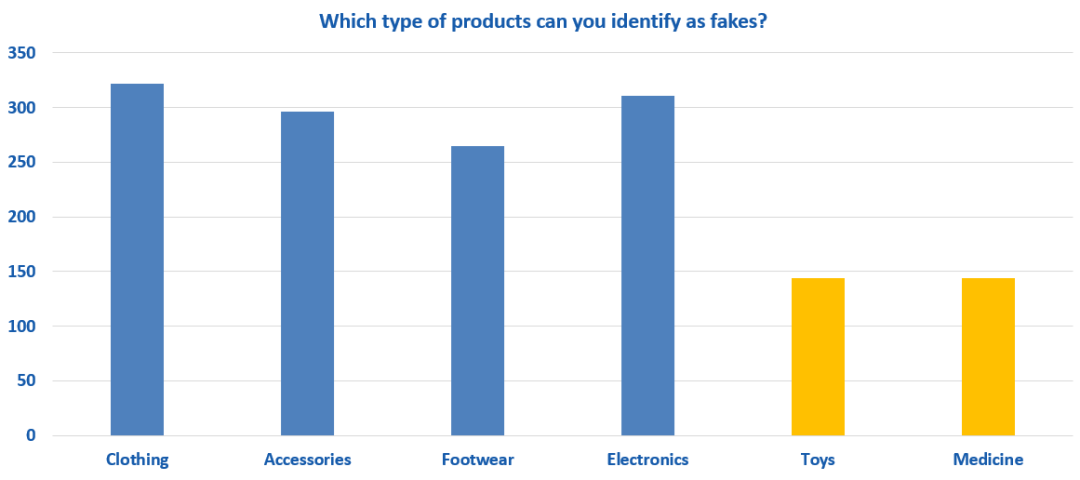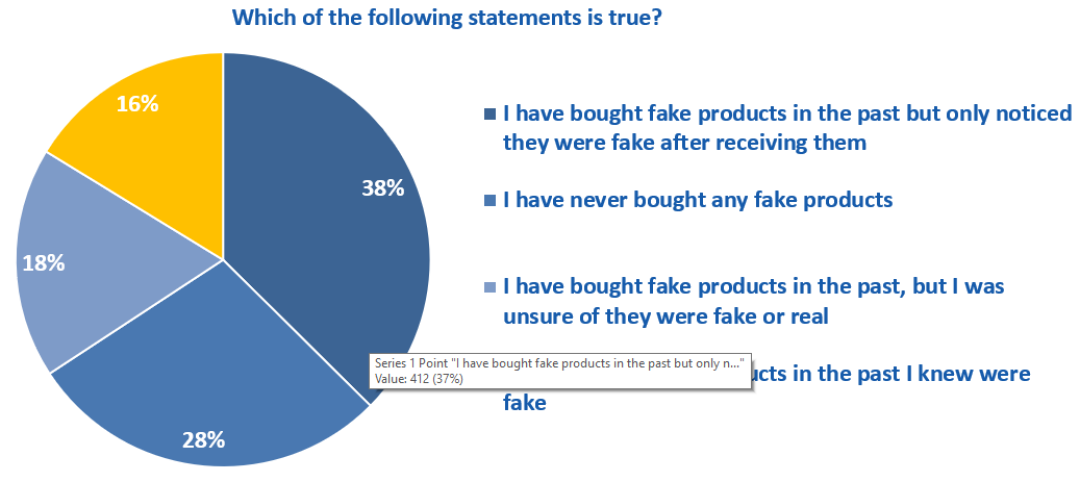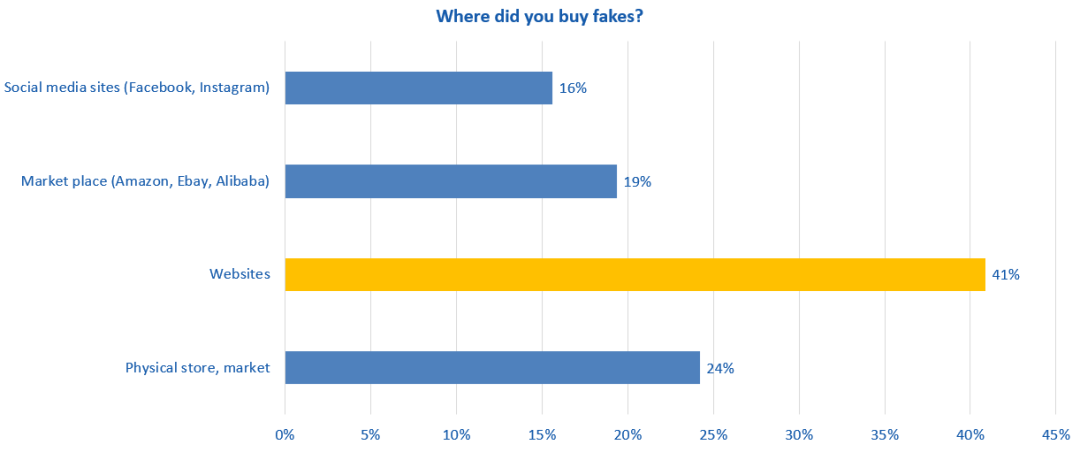Scamadviser.com surveyed 1126 consumers from 128 countries asking them why they buy fakes and how they could be kept from buying counterfeit.
While all income groups, educational categories, age levels and continents are represented, it is interesting to note that mostly men (65%) participated. Further research will be required to determine if maybe men buy more counterfeit than generally thought?
Most consumers (51%) consider themselves capable of identifying counterfeits. This is especially the case for Clothing, Accessories and Consumer Electronics. Only 11% admit they are unable to identify fakes. Consumers doubt their ability to recognize fakes Toys and Medicine.

Still, 56% of the consumers have bought a fake product in the past unknowingly or doubting the originality of the product. 16% admits knowingly having bought fakes. Clothing, consumers electronics and accessories are the most common fake products bought.

Focus of brand protection agencies has shifted to online marketplaces in recent years. However, remarkably, websites (41%) are by far the most popular channel to buy counterfeits. This channel if followed by physical outlets and markets (24%). Online marketplaces like Amazon, Ebay and Alibaba take a third place (19%) and Social Media such as Facebook and Instagram are named fourth (16%).

Not surprisingly consumers buy fakes primarily due to the lower price (40%). Also, the feeling that the real brand is overpriced is named often (23%).
Still, 60% of the consumers are (very) dissatisfied with their purchase. Consumers are aware that counterfeits support crime and human exploitation. What however would keep consumers the most from buying counterfeit is the concern about the quality of the product (20%) and the believe that buying fakes online is not safe (19%) as their (financial) data may be misused and the product not delivered (14%).
Regarding the fight against counterfeits, consumers think the lead should be taken by consumer protection agencies (22%) and not by international authorities such as Europol/Interpol (10%) and the EU/UN (9%).